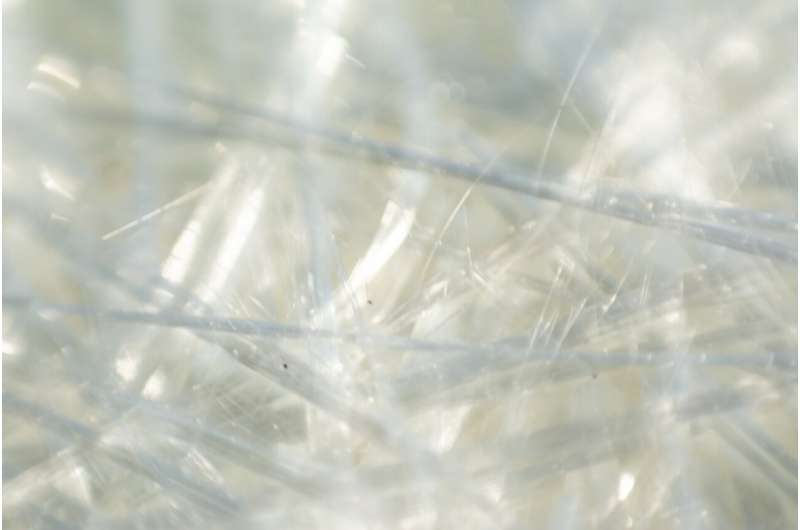This article has been reviewed according to Science X's editorial process and policies. Editors have highlighted the following attributes while ensuring the content's credibility:
fact-checked
trusted source
proofread
Researchers demonstrate chronic wound healing using glass

Researchers at the University of Birmingham have demonstrated that silver retains antimicrobial activity longer when it is impregnated into "bioactive glass," and they have shown for the first time how this promising combination delivers more long-lasting antimicrobial wound protection than conventional alternatives.
Bioactive glasses are a unique class of synthetic biomaterials made from silicone and have been used for some years in bone grafting.
Silver has long been known to prevent or reduce the growth of biofilms (communities of bacteria) in open wounds, and silver-based treatments are increasingly popular as they are effective against many antibiotic-resistant strains of bacteria. These antimicrobial properties depend on silver remaining in an ionic form so it can penetrate bacterial cell walls and disrupt their life cycle, but the silver ions or nanoparticles in wound dressings are prone to transforming to silver sulfide or silver chloride—which can reduce antimicrobial activity and hinder the success of treatment.
The researchers investigated the effects of bioactive glass doped with ionic silver on biofilms formed by Pseudomonas aeruginosa, a multi-drug resistant bacterium that easily forms biofilms and is a common cause of infection in chronic wounds.
The study, published in the journal Biofilm, showed that specific preparation, storage and application techniques can minimize the transformation of silver ions to silver chloride and so retain antimicrobial activity.
The Birmingham team already has substantial experience in bioactive glass, which is currently used as a bioactive degradable graft material. In this application, the critical aspects of bioactive glass are its fibrous form which gives a 3D porous structure that is robust, packable and the diameter and density of the glass fibers to support tissue growth.
The researchers are keen to meet companies that would like to collaborate or co-develop products for dental surgery or wound care.
Post-doctoral researcher Dr. Sam Moxon, who works with the Birmingham team, has been exploring the use of these innovative materials in dental surgery and wound care. He has just completed a program called ICURe (Innovation to Commercialization of University Research) and the team is now looking to proceed the material toward clinical approval.
Dr. Moxon is speaking about this work at the UK Society for Biomaterials annual conference in Belfast on June 21st. He will also deliver a keynote at the Future Investigators in Regenerative Medicine annual conference in Spain in September, where he will cover his research from Birmingham, and the team's aspirations to develop their promising new biomaterials.
More information: Silver-doped bioactive glass fibres as a potential treatment for wound-associated bacterial biofilms. Biofilm (2023), DOI: 10.1016/j.bioflm.2023.100115 , www.sciencedirect.com/science/ … ii/S2590207523000126




















